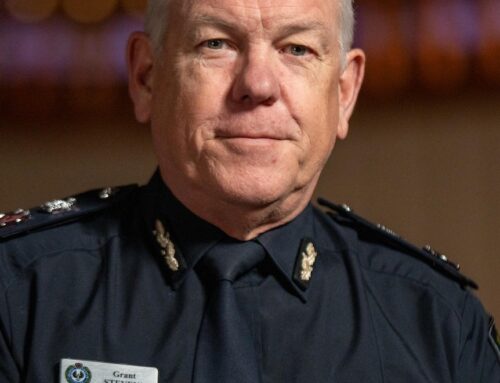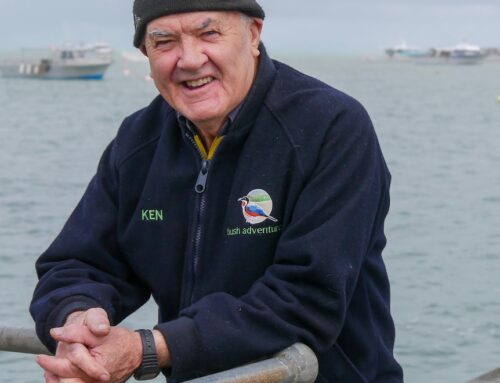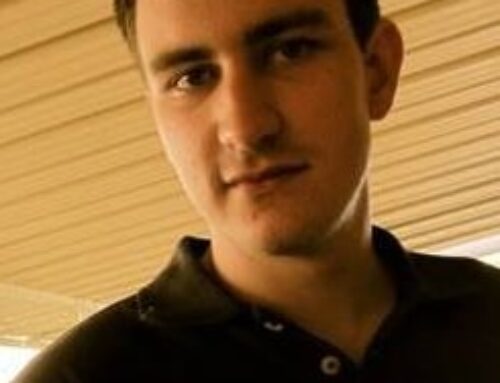South Australian children in detention are causing “significant risk and injury” to themselves, the state’s youth justice centre watchdog has revealed, with most ambulance call-outs to the centre responding to self-harming incidents.
Warning: This story contains references to self-harm.
Key points:
- Shona Reid is legislated to advocate for children detained at the Kurlana Tapa Youth Justice Centre in Adelaide’s north
- She has tabled a report in SA’s parliament about self-harm at the centre
- Her report also notes the ratio of SA girls in detention has doubled compared to five years ago
In a report tabled in SA parliament on Thursday, Training Centre Visitor (TCV) Shona Reid wrote that between April and June alone, staff working at the Kurlana Tapa Youth Justice Centre in Adelaide’s north removed 93 ligatures from detained children.
“Sometimes these were loose enough to untie or remove with bare hands. Some were cut off using a ‘life knife’,” she wrote.
“The TCV is aware of multiple protracted self-harm incidents, where young people tied multiple ligatures or required restraint several times.
“Many of these caused significant risk and injury to young people.”
Ms Reid is legislated to advocate for children detained at Kurlana Tapa – South Australia’s only secure holding facility for children sentenced or remanded to detention.
Last financial year, 324 children were detained at the centre.
The majority – more than 90 per cent – were detained on remand, meaning they were yet to be found guilty of the crimes for which they were alleged to have committed.
One 17-year-old detained at Kurlana Tapa reportedly told Ms Reid’s staff:
“Being locked away for a long time as much as we have been can psychologically impact our minds … please help us.”
Ms Reid told ABC News that since she was appointed last year, her office had taken a “deep dive” into records to uncover the extent of self-harming at the centre.
She said her office was unable to determine the exact number of self-harming incidents, or whether there had been any noticeable data trends, as information was spread across multiple reports.
“When we dive into our review of records and have a look at those particular incidents … 71 per cent from our records indicates that an ambulance was called due to a self-harming incident,” she said.
“For us, it’s an issue that we can’t take our eyes off.
“It’s an issue that should worry all of us.”
Restrictions placed on children after they self-harm
Ms Reid said that often children in detention are placed on restrictive plans after they self-harm.
She said in some cases, children are only given finger food to eat as they are banned from using cutlery, they must wear clothing made from “tough” canvas that cannot tear, and their access to personal items is restricted.
“Those behaviour plans are in place supposedly to be there to protect them,” she said.
“One of the compounding impacts of that is that they are further isolated.
“They are … without those fundamental things that would help you deal with your life at the centre.
“It is sometimes a very lonely, scary place to be.”
The watchdog also raised concerns about the use of a “safe room” at the centre, which she described as “bare” and “padded in a rubbery material”.
Her report states the longest period a child spent in the safe room was more than seven hours.
“It’s a very sad place, those safe rooms,” Ms Reid said.
“Any time in a safe room is distressing, any time when you’re in a room with no chair, no tables, no bed, nothing, you are on your own … with your own thoughts, with your own feelings about what happened to you prior to being placed in a safe room.”
Child mental health needs ‘concerning’
A spokesperson from the Department for Human Services (DHS), which operates Kurlana Tapa, told ABC News that trends in self-harming can relate to a “small number of young people with very high and complex needs”.
They said the department was concerned about a “growing number” of young people presenting with complex mental health and disability-related needs.
“It is especially concerning when this manifests in self-harming behaviour,” they said.
“DHS has been working closely with Child and Adolescent Mental Health Services (CAMHS) to establish extended services for young people at Kurlana Tapa to increase the accessibility of mental health support.
“Staff actively monitor young people who may be at risk.”
The spokesperson said the department was “strengthening” a therapeutic, trauma-informed service delivery approach at Kurlana Tapa, including by increasing staff training about trauma, disability and sensory needs.
“When a young person is displaying self-harming behaviours, access to items that pose a risk to their safety is limited or removed,” they said.
“Other temporary measures, such as providing young people with meals that do not require cutlery and increasing direct staff observation to ensure their safety, may also be necessary in the circumstances.”
Ratio of SA girls in detention doubles
Ms Reid’s report also noted that nearly one in five children detained on an average day at Kurlana Tapa last financial year were girls – double the ratio compared to five years ago.
She said she was unsure why more girls were entering the centre.
“I think it’s a good question we should be looking at from our courts and from a social services sector around why young girls are increasing their prevalence in this space,” she said.
“But, I don’t have an answer to that.”
Data analysed by Ms Reid’s office found girls were also disproportionately restrained at Kurlana Tapa compared to boys.
More than 66 per cent of girls involved in incidents at Kurlana Tapa were restrained in prone position – meaning they were held face-down on the floor.
Comparatively, only 47 per cent of boys involved in incidents were restrained this way.
Ms Reid described the prone restraint as “concerning”.
“Even though staff are trained to use that restraint with care and as safely as possible, it is still a highly aggressive and physical restraint,” she said.
“I don’t know why girls are in the situation where we’ve noted that it is used more – I think that is something that we can look at and monitor as we go forward.”
Ms Reid said some girls in detention might have experienced sexual violence in the community and the prone restraint could trigger them.
“A number of people do hold you down usually on the ground,” she said.
“It is quite traumatising if you have experienced sexual violence in your life.”
A Department for Human Services spokesperson said they were unable to verify Ms Reid’s data analysis.
They said appropriately trained staff could only use force as “reasonably necessary, justified and proportionate in the circumstances”.
“Use of force is only permitted to prevent a resident from harming themselves or another person,” they said.
“Kurlana Tapa staff strive to minimise the use of force through a range of de-escalation techniques and through practices such as active engagement and building meaningful relationships with children and young people.”




